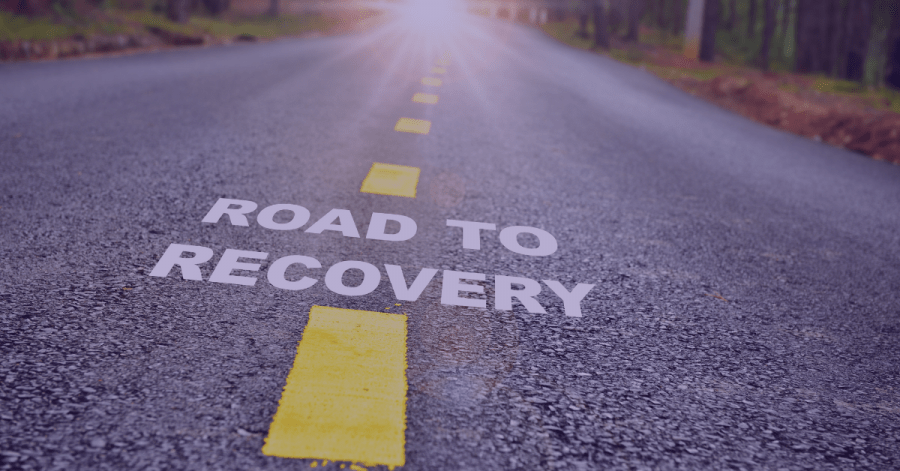This year alone, 6 billion euros will be available to public and private institutions through Romania’s National Recovery and Resilience Plan (NRRP). The framework was approved by the European Commission on October 28, 2021. The mechanism is part of the NExtGenerationEU initiative to support investment and reforms across the EU, in an unprecedented effort to help countries exit and recover from the COVID-19 pandemic.
Romania has five years to implement the plan, which will support the enabling of crucial reforms and investments in key areas for economic growth. The budget of ~€29.2 billion is also generous, and allocation is in line with European objectives.
The biggest pillar is dedicated to the green transition (~57%), with focus on the development of transport infrastructure, the energy renovation of buildings, and waste management facilitation.
Another important pillar is digitalization with ~21% allocated for creating a governmental cloud infrastructure and an eHealth system among others.
Then, 8.8% are allocated as support for the private sector and research projects, including an aid scheme for the digitization of SMEs, a venture capital fund for recovery, and financial instruments for climate action.

However, the funds will not be as easy to obtain as with other funding mechanisms. Instead, the money will be paid by the EU to Romania based on the progress made on the targets set. Half of the budget consists of non-reimbursable funds (grants) and half of loans.
Currently, the government is working on the guidelines for launching NRRP project calls. By March 2022, the Romanian government is also expecting the approval and signing of an operational agreement with the European Commission, through which the EC can transfer the installments and understand what each installment will be spent on.
The Recursive reached out to Alexandra Cernian, Expert Evaluator at Horizon 2020 and Horizon Europe for the European Commission, to discuss the budget allocation, targets, and success factors for Romania’s National Recovery and Resilience Plan.
As a Member of the National Council for Digital Transformation (CNTD) and CEO of cleantech startup Recycllux, Alexandra also shares her specialist perspective on the two core components of the plan: digitalization and the green transition.
The Recursive: How come the majority of the budget is allocated to the green transition?
Alexandra Cernian: I think that it became obvious once the plan started to make sense that everything was in line with the main European directives and priorities.
The European Commission has stated very clearly that they expect a significant portion of the budget (around 30-40%) to be allocated to the green transition. So, in the case of the Recovery Plan, I think it’s proof that significant efforts were made to align the national objectives with the European ones.
The areas to which most of the budget goes, transportation and climate change, are also very well aligned with the European Green Deal directive. Climate change has been one of the most important aspects that Europe has been tackling in the last few years. And transportation is one of the main factors impacting carbon emissions.
What do you think of the targets set in this area?
Romania so far has been behind with green transition objectives. We had several infringements from the EU, in areas such as waste management. So, the targets are also in line with the issues that we’ve had so far and the domains where we were most behind.
It is an opportunity to push forward a little bit. And by assuming responsibility with these objectives that were set within the Recovery Plan, we will be forced to do better.
We don’t just get the money as a gift. Some money comes in as grants, yet there is also other money coming as loans. So, Romania will have to also prove that the targets set were reached in order to receive the entire funding.
How about the budget allocated to digitalization?
We’ve been talking for so long in Romania about digital transformation. The steps that were actually taken were quite small, and this could be a significant help to improve the situation.
We have a specific pillar in the Recovery Plan dedicated to digital transformation but if we take a look also at other pillars like education, public administration or sustainability, they all include a digitalization component. Overall, I think the budget for the digital transformation will be more significant than those ~20% announced in the plan.
How ambitious are the targets for digitalization, and which will be crucial to reach?
The goals for the digitalization component are very ambitious; they may even be too ambitious for the competencies that we currently have.
The most important component there is the governmental cloud. The databases that public institutions are working with are only available locally. Everything is siloed inside this specific institution. And this will be the first big action to take in order to reach a unitary data model.
This will come hand in hand with the entire digitization of the public administration and the interoperability between public and private institutions. It could also be a huge benefit for citizens in terms of all the interactions with national authorities.
It’s not a new topic. We’ve been talking about it for a few years. Unfortunately, each time we had a new government, they started making plans without then getting to the implementation phase.
Yet, in the last year, we have made some steps that prepared us for this plan. The Romanian Authority for Digitalization has started and successfully implemented a few pilots. One of them was the digital identity project. It’s still a pilot project, but we hope that we will see some actual results out of it in the near future. They made significant efforts with Ghiseul.ro (the national electronic system for online payments), which grew a lot during the last year, with more and more institutions joining.
What are the opportunities for the private sector?
There is not a public planning from start to end but there will be significant funding allocated to innovations under this recovery plan, also to make the funding more in line with the overall European objectives. We recently had the Startup Nation program; so, there could be some shifts made to move it a little bit towards innovations.
Under the NPRR, they have just started to launch different actions and to allocate funds for projects. Especially since we have such generous budgets for the entire digital and the green components, it looks like there will be a lot of opportunities for startups, researchers, and companies to get some funding from this program and to get involved in its implementation.
What will the success in implementation depend on?
I think one of the biggest challenges that we need to tackle is the mindset. We need to take a step back, reanalyze our current situation, and come up with a unitary vision. It is important that all the stakeholders in the process are aligned with this vision, to try to push things forward.
When it comes to the digitalization targets, one challenge ahead is our national level of digital competences. Once we implement this governmental cloud, we need to facilitate the digital interaction between citizens and public authorities.
So, we will need to increase the digital competencies and skills for the average citizen in Romania, as we all know from The Digital Economy and Society Index (DESI), where Romania ranks last or close to last.
The success of the implementation will also depend on the people and competences involved in handling the project. We will need strong project management and leadership capabilities to successfully finalize the project and reach the goals.
The leaders that will be placed in the position to coordinate the implementation of the plan need to have the right vision, and to understand the need for a unitary vision and for alignment of Romania with the European objectives.
They will also be counted on to bring along in this project the people with the right competencies, to understand that it’s important to attract the private sector, because in the private sector there are significant skills and experience with large and complex projects.








